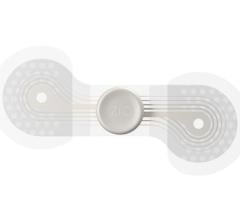
May 19, 2016 — St. Jude Medical Inc. announced results from two cardiovascular clinical trials presented at EuroPCR 2016. The studies — which include a look at how St. Jude Medical fractional flow reserve (FFR) technology impacts patient outcomes in acute coronary syndrome (ACS), and a comparison of left atrial appendage occlusion (LAAO) therapy to standard medical treatment – were presented during hotline sessions.
The latest studies contribute to the growing body of evidence supporting two St. Jude Medical cardiovascular therapies: FFR guidance with St. Jude Medical PressureWire technology to optimize percutaneous coronary intervention (PCI) procedures in patients with narrowed or blocked coronary arteries, as well as left atrial appendage closure for patients at increased risk of stroke as a result of atrial fibrillation.
St. Jude’s LAAO therapy devices include the original Amplatzer Cardiac Plug (ACP) and now the Amplatzer Amulet.
The PRIME-FFR study aimed to quantify the value of FFR when deciding the most appropriate treatment for patients with ACS. In the medical community, ACS is an umbrella term for medical conditions where blood supply to the heart is suddenly blocked. According to the American Heart Association, the blockage can be sudden and clog the entire artery, or it can be a moving clot that causes temporary blockage and decreased blood supply. The condition is more commonly referred to as a heart attack and needs to be addressed by a physician immediately.
In assessing the value of FFR, the study’s investigators defined management strategies for patients based on angiography results before performing FFR, and then made a final treatment strategy decision after performing FFR. Results showed that management strategy reclassification after performing routine FFR was high and that FFR is safe to use in ACS patients, indicating a management strategy guided by FFR safely leads to changes in physician decision-making.
In the second study, researchers assessed the impact of a LAAO in patients with atrial fibrillation (AF) and intracerebral hemorrhage (ICH) versus patients who received standard medical therapy. The left atrial appendage is a small pouch that hangs from the left atrium, which is considered to be unproblematic for most people with a regular heart rhythm. However, patients with AF experience a chaotic, uncontrolled heart rhythm, which can increase the likelihood of clot formation in the LAA, potentially resulting in a stroke. Because AF leads to an increased risk of stroke, a physician may seal off the LAA with an LAAO, or prescribe oral anticoagulants (OAC) to potentially reducing that risk.
While OACs are proven to be effective in reducing the risk of stroke in patients with AF, this therapy carries the risk of ICH, or recurrent bleeding, which is the leading cause of stroke mortality. Because the risk of reoccurring ICH is increased among patients who have previously experienced an ICH, many of these patients are denied OAC.
The LAAO in AF and ICH study found that patients with AF and a prior ICH who were treated with a St. Jude Medical LAAO device had a lower risk of ischemic stroke, major bleeding and all-cause mortality compared to patients treated with standard care, suggesting that LAAO offers a major clinical benefit.
“Patients with atrial fibrillation and previous intracerebral hemorrhage have an increased risk of ischemic stroke or repeated hemorrhage,” said Jens Erik Nielsen-Kudsk, M.D., DMSc, an associate professor of cardiologic medicine at Aarhus University and the study’s lead author. “The data from the this latest clinical assessment further shows that having a device like the Amplatzer LAA occlusion device implanted in these patients’ hearts offers them additional opportunity for improved cardiac health.”
For more information: www.sjm.com


 September 12, 2025
September 12, 2025 









